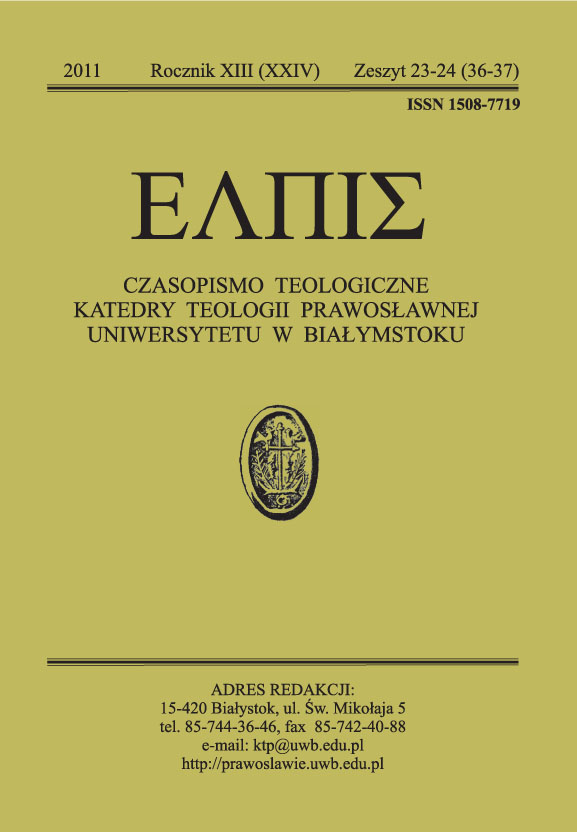The sacrament of Holy Baptism
DOI:
https://doi.org/10.15290/elpis.2011.13.12Keywords:
Sacrament, Baptism, Chrismation, Orthodox Church, Mysteries, Holy Water, Rebirth, Holy Trinity, AnointingAbstract
Holy Baptism, in the Orthodox Church, along with Chrismation, the Holy Eucharist, Priesthood, Marriage, Holy Unction and Confession is one of the seven sacraments. It is one of the Mysteries established by God himself, during which His grace descends on humanity. It is an action, which unites people with their Creator by grace and leads us to the Kingdom of Heaven.
In Holy Baptism, we are immersed into water three times (or HolyWater is poured three times, but never sprinkled) in the Name of theHoly Trinity and die to his earthly life and sin. At the same time, weare reborn to eternal and heavenly life. We are cleansed from all sinscommitted voluntary or involuntary. Our weaknesses and propensityto sin is healed. We become a pure being and heir of the Kingdomof Heaven. We also become and enemy of Satan and all evil powers.The Orthodox Church usually chrismates immediately after baptism,especially in the case of small children, so that we would not loose in thisfight, loose our purity and more easily reach perfection. Both sacramentsare administered on the basis of the faith of the godparents.
The liturgical celebration of Baptism and Chrismation begins withprayers and the naming of the child. The prayers of exorcism follow,in which the candidate for baptism (either personally or godparentson his behalf) rejects Satan, unites himself to Christ and recites theSymbol of Faith. Baptism consists of the blessing of water and anointingwith oil. The main senses of the child are anointed with Holy Oil: theforehead – mind, breast – feelings, ears – contact with the surroundingworld, hands – actions, feet – Endeavour. A moment later, the child isimmersed into the water three times – Holy Baptism. Prayers are then read calling the Holy Spirit to be present during Chrismation. Holy Chrism (myrrh), which is consecrated by the laying on of hand of the Bishop, is then used to anoint the forehead, eyes, nostrils, mouth, ears, breast, hands and feet of the newly baptized.
The following ceremonies take place after the Chrismation: clothing the newly baptized in white vestments, putting on a cross, procession, and cleansing of the anointed areas and tonsuring all hold lesser meaning. They call the baptized to maintain purity and to work on constant self perfection in Christian virtues. That which we receive in Holy Baptism and Chrismation, however can be lost. God does not save us without our participation. This also concerns the power of the sacraments.
Downloads
Downloads
Published
How to Cite
Issue
Section
License
Copyright (c) 2014 Elpis

This work is licensed under a Creative Commons Attribution-NonCommercial-ShareAlike 4.0 International License.
The detailed terms of the CC BY-SA license (Attribution - Share Alike) are available on the Creative Commons website - link.
The author must complete and send to the editorial office (elpis@uwb.edu.pl) the completed and signed author's contract with a declaration of the originality of the article and the author's contribution to the article. Download Agreement File: HERE








